Wine and Art is an ongoing GFR series on the relationship between the two creative endeavours by working artist and author Lorette C. Luzajic.  After two glasses of Mexican wine, we begin to sing The Love Boat theme song. Much to the chagrin of other diners, we find ourselves remembering all the words. The Love Boat was a not-bad-feel-good kind of show, qualities not unlike Mexico’s okay wines. It came to mind as we were dining in Puerto Vallarta, the famous cruise ship’s final port of call. We’re at Di Vino Dante Wine and Tapas Bar. It’s a stunning wine and art lounge upstairs in an old Hacienda. It just celebrated its first anniversary. The garlic and guajillo chile-baked shrimp alone are worth the airfare. The gooey, thin crust pizza is to die for. I confess to being underwhelmed by the dozen or so local wines I tried throughout my stay in Mexico, but I still love the idea of Gena Guarniere’s venue. Gena is right to recognize the potential value of Mexico’s wine market. Combining it with the wealth of a longstanding bounty, the country’s visual art, is a stroke of genius. Perhaps it was the natural outcome for a woman who studied both fine art and wine at the University of British Columbia, and whose art and culture acumen is a family affair. Gena’s parents are Joe and Claire Guarniere, expats who opened Galleria Dante 15 years ago. The gallery represents 50 artists around the world, keeping the focus on the contemporary Mexican scene. In contrast to the wine culture, the nation’s arts heritage is famously rich, diverse, and spectacular. Today’s talent is no exception. Let me clarify that wine in Mexico is in fact not new. The region is actually the oldest wine producer in the Americas, since Cortes wasted no time ordering that grapes be planted in New Spain. This means production goes back almost five centuries. It includes some poetic methodologies, such as crushing the grapes by foot to the gentle rhythms of live harp playing. To many wine enthusiasts, this kind of lore imparts its own unique flavour to wine. It’s not just about terroir, about sunshine and rain. For us, wine is history and poetry in a glass. The Mexican wine story is a harrowing adventure of passion, migration, bloodshed, religion, prohibition, and struggle against the elements. For all that romance, the region still gets tepid endorsements. “Overall… on the right track … ranks as a North American wine region worthy of being discovered,” said Wine Enthusiast Online. There are reasons why Chilean and Mexican wine are in different leagues. The weather, for one. But the greatest limitation for the wine market in Mexico is something else altogether: the market itself. Mexicans drink among the least amount of wine of all people in the whole wide world. Some sources estimate that Mexicans imbibe two glasses per person. That’s per year, not meal. For comparison, the Spanish drink 21 litres per head, and that’s still less than half of what the French enjoy. It’s true that Mexico’s wine taxes are shocking. But insane taxes are never uncommon, like here in Canada, and people in nations where the punishment is not tax, but hanging, manage to drink far more wine. Mexico simply loves its national drink, tequila, most, and also beer. Spanish influence be damned, hardly anyone drinks wine. But there’s a positive side to this travesty: at two measly glasses per annum, that’s what you call an untapped market. Di Vino Dante recognizes that expats and travelers want to experience the wine of local and neighbouring Latin American cultures, and its curatorial wine evangelism will spread the contagious blessings of the grape far and wide. It’s win-win from here on: the more people enjoy the wine, the better the wine gets. The better it gets, the more it will be reached for. Since wine is a longstanding tradition alongside the visual arts, as well as paired with foods, this outstanding restaurant is a perfect celebration of the best things in life. Downstairs, the Galleria Dante illuminates another aspect of culture. Mexico’s art heritage is epic. There are so many layers and intersections and connections that I’m in way over my head. Frida Kahlo and Diego Rivera are, of course, the names that naturally come to mind. Another couple, Manuel and Lola Alvarez Bravo, are photographers among my personal favourites. Another artist I love is Angel Zarraga, whose curious mythologies are a peculiar blend of traditional academy techniques and ancient storytelling.
After two glasses of Mexican wine, we begin to sing The Love Boat theme song. Much to the chagrin of other diners, we find ourselves remembering all the words. The Love Boat was a not-bad-feel-good kind of show, qualities not unlike Mexico’s okay wines. It came to mind as we were dining in Puerto Vallarta, the famous cruise ship’s final port of call. We’re at Di Vino Dante Wine and Tapas Bar. It’s a stunning wine and art lounge upstairs in an old Hacienda. It just celebrated its first anniversary. The garlic and guajillo chile-baked shrimp alone are worth the airfare. The gooey, thin crust pizza is to die for. I confess to being underwhelmed by the dozen or so local wines I tried throughout my stay in Mexico, but I still love the idea of Gena Guarniere’s venue. Gena is right to recognize the potential value of Mexico’s wine market. Combining it with the wealth of a longstanding bounty, the country’s visual art, is a stroke of genius. Perhaps it was the natural outcome for a woman who studied both fine art and wine at the University of British Columbia, and whose art and culture acumen is a family affair. Gena’s parents are Joe and Claire Guarniere, expats who opened Galleria Dante 15 years ago. The gallery represents 50 artists around the world, keeping the focus on the contemporary Mexican scene. In contrast to the wine culture, the nation’s arts heritage is famously rich, diverse, and spectacular. Today’s talent is no exception. Let me clarify that wine in Mexico is in fact not new. The region is actually the oldest wine producer in the Americas, since Cortes wasted no time ordering that grapes be planted in New Spain. This means production goes back almost five centuries. It includes some poetic methodologies, such as crushing the grapes by foot to the gentle rhythms of live harp playing. To many wine enthusiasts, this kind of lore imparts its own unique flavour to wine. It’s not just about terroir, about sunshine and rain. For us, wine is history and poetry in a glass. The Mexican wine story is a harrowing adventure of passion, migration, bloodshed, religion, prohibition, and struggle against the elements. For all that romance, the region still gets tepid endorsements. “Overall… on the right track … ranks as a North American wine region worthy of being discovered,” said Wine Enthusiast Online. There are reasons why Chilean and Mexican wine are in different leagues. The weather, for one. But the greatest limitation for the wine market in Mexico is something else altogether: the market itself. Mexicans drink among the least amount of wine of all people in the whole wide world. Some sources estimate that Mexicans imbibe two glasses per person. That’s per year, not meal. For comparison, the Spanish drink 21 litres per head, and that’s still less than half of what the French enjoy. It’s true that Mexico’s wine taxes are shocking. But insane taxes are never uncommon, like here in Canada, and people in nations where the punishment is not tax, but hanging, manage to drink far more wine. Mexico simply loves its national drink, tequila, most, and also beer. Spanish influence be damned, hardly anyone drinks wine. But there’s a positive side to this travesty: at two measly glasses per annum, that’s what you call an untapped market. Di Vino Dante recognizes that expats and travelers want to experience the wine of local and neighbouring Latin American cultures, and its curatorial wine evangelism will spread the contagious blessings of the grape far and wide. It’s win-win from here on: the more people enjoy the wine, the better the wine gets. The better it gets, the more it will be reached for. Since wine is a longstanding tradition alongside the visual arts, as well as paired with foods, this outstanding restaurant is a perfect celebration of the best things in life. Downstairs, the Galleria Dante illuminates another aspect of culture. Mexico’s art heritage is epic. There are so many layers and intersections and connections that I’m in way over my head. Frida Kahlo and Diego Rivera are, of course, the names that naturally come to mind. Another couple, Manuel and Lola Alvarez Bravo, are photographers among my personal favourites. Another artist I love is Angel Zarraga, whose curious mythologies are a peculiar blend of traditional academy techniques and ancient storytelling. 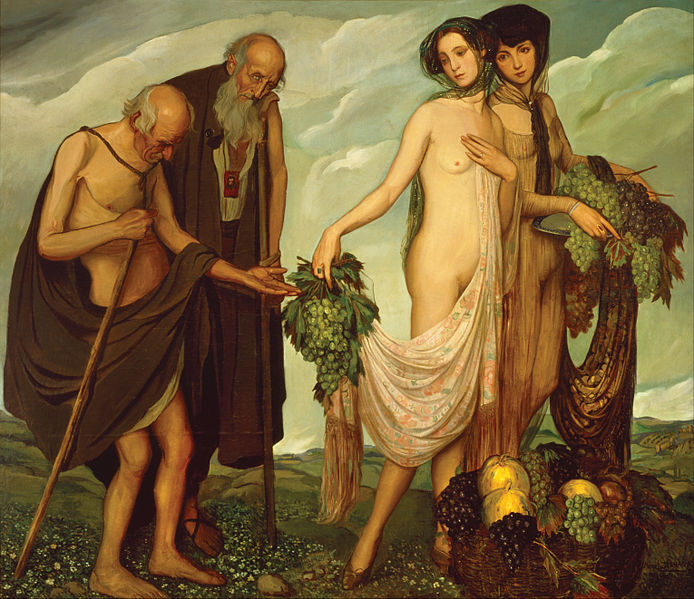 This handful of names doesn’t even touch on the intricate Huichol beadwork, the famous leather craft, the pre-Columbian and the colonial era jewels of architecture, the muralists and other political and protest artists, and the ancient and Catholic and syncretic religious folk art … The rather grisly manifestations of 16th century Spanish Catholicism was a perfect match for the bloody theatre of ritual saturating Mexican antiquity. Masks, knives, and paintings used in or depicting human sacrifice are abundant and fascinating. Of course, Mexico is also famous for its silver veins, and its history is resplendent with ceremonial silver craft and contemporary jewelry. And glass. And pottery. And mosaic tiles. Galleria Dante is a labyrinthine tropical waltz, with a stunning open aired sculpture garden and room after room of dazzling colour. The gallery blooms with bronze sculptures, much like the very city of Puerto Vallarta itself.
This handful of names doesn’t even touch on the intricate Huichol beadwork, the famous leather craft, the pre-Columbian and the colonial era jewels of architecture, the muralists and other political and protest artists, and the ancient and Catholic and syncretic religious folk art … The rather grisly manifestations of 16th century Spanish Catholicism was a perfect match for the bloody theatre of ritual saturating Mexican antiquity. Masks, knives, and paintings used in or depicting human sacrifice are abundant and fascinating. Of course, Mexico is also famous for its silver veins, and its history is resplendent with ceremonial silver craft and contemporary jewelry. And glass. And pottery. And mosaic tiles. Galleria Dante is a labyrinthine tropical waltz, with a stunning open aired sculpture garden and room after room of dazzling colour. The gallery blooms with bronze sculptures, much like the very city of Puerto Vallarta itself.  Mexico’s artists work in a wide range of styles and concepts, but looking around the gallery and the works of the country’s best artists, perhaps it is safe to say that surrealism crowns its list of special gifts. It’s a way of looking at the world that is woven throughout the culture, from the theatre of wrestling to the dazzling array of sacred kitsch of faith to the poetry of Octavio Paz. Salvador Dali allegedly hated Mexico because, “I will not go again to a country that is even more surreal than my paintings.” But Frida Kahlo rejected the label “surrealism” and said, “I never paint dreams or nightmares. I paint my own reality.” Does, “magical realism,” made famous by Gabriel Garcia Marquez and Isabelle Allende, better describe the culture’s nuance? Here, magical elements are naturally woven into ordinary landscapes or events.
Mexico’s artists work in a wide range of styles and concepts, but looking around the gallery and the works of the country’s best artists, perhaps it is safe to say that surrealism crowns its list of special gifts. It’s a way of looking at the world that is woven throughout the culture, from the theatre of wrestling to the dazzling array of sacred kitsch of faith to the poetry of Octavio Paz. Salvador Dali allegedly hated Mexico because, “I will not go again to a country that is even more surreal than my paintings.” But Frida Kahlo rejected the label “surrealism” and said, “I never paint dreams or nightmares. I paint my own reality.” Does, “magical realism,” made famous by Gabriel Garcia Marquez and Isabelle Allende, better describe the culture’s nuance? Here, magical elements are naturally woven into ordinary landscapes or events. 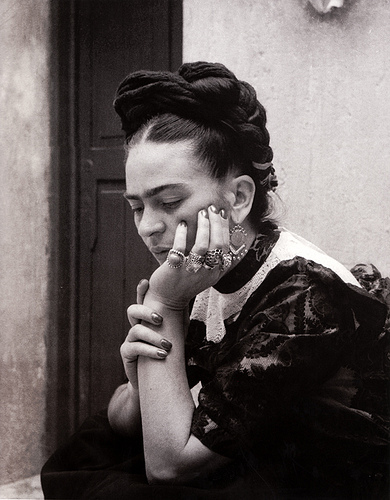 The poet Paz also wrote about art. Perhaps he explained the inexplicable best. “I sat at the foot of a huge tree, a statue of the night, and tried to make an inventory of all I had seen… Human kind cannot bear much reality. Yes, the excess of reality had become an unreality, but that unreality had turned suddenly into a balcony from which I peered into—what? Into that which is beyond and still has no name…” With this in mind, we can get lost in the works of one of today’s most intriguing painters, Guadalajara, Jalisco’s Israel Zzepda.
The poet Paz also wrote about art. Perhaps he explained the inexplicable best. “I sat at the foot of a huge tree, a statue of the night, and tried to make an inventory of all I had seen… Human kind cannot bear much reality. Yes, the excess of reality had become an unreality, but that unreality had turned suddenly into a balcony from which I peered into—what? Into that which is beyond and still has no name…” With this in mind, we can get lost in the works of one of today’s most intriguing painters, Guadalajara, Jalisco’s Israel Zzepda.  Zzepda’s strange and beautiful creations summon Magritte and Dali and all the other master surrealists but his fertile imagination stands boldly on its own. His fantastical oil and acrylic paintings are so impossibly photographic that they look digital. Zzepda’s art training in anatomy is central to his work, but his figures inhabit curious scenarios alongside fish, apples, hearts, the Virgin of Guadalupe, crutches, wings, iguanas, masks and mazes. Ignacio Guerrero shares some of Zzepda’s symbols, but his colourful works embody a folksy, exuberant naivety. Poema Nocturno features a woman- goddess?- holding the moon and stars in her hands. A patchwork horse on wheels, reminiscent of old opera props, carries her. The painting instantly transports the viewer into an enchanted world. The work of Rogelio Diaz also catches my attention. Each canvas is worked to a crowded frenzy of layers, rich in references to modern Mexican and indigenous cultures. These riotous cacophonies of colour and texture conjure something of Basquiat, with recurring motifs of bones and text and toothy faces, but it’s as Mexico’s Picasso that this artist is sometimes referred.
Zzepda’s strange and beautiful creations summon Magritte and Dali and all the other master surrealists but his fertile imagination stands boldly on its own. His fantastical oil and acrylic paintings are so impossibly photographic that they look digital. Zzepda’s art training in anatomy is central to his work, but his figures inhabit curious scenarios alongside fish, apples, hearts, the Virgin of Guadalupe, crutches, wings, iguanas, masks and mazes. Ignacio Guerrero shares some of Zzepda’s symbols, but his colourful works embody a folksy, exuberant naivety. Poema Nocturno features a woman- goddess?- holding the moon and stars in her hands. A patchwork horse on wheels, reminiscent of old opera props, carries her. The painting instantly transports the viewer into an enchanted world. The work of Rogelio Diaz also catches my attention. Each canvas is worked to a crowded frenzy of layers, rich in references to modern Mexican and indigenous cultures. These riotous cacophonies of colour and texture conjure something of Basquiat, with recurring motifs of bones and text and toothy faces, but it’s as Mexico’s Picasso that this artist is sometimes referred.  It’s impossible in so few words to do justice to the creative and culinary offerings of 269 Basilia Badillo, never mind all of Vallarta and modern and ancient Mexico. Instead, let this act as an invitation to visit one of the world’s richest and most imaginative cultures. Consider Angel Zarraga’s 1910 La Dadiva – The Gift (above). This mysterious painting shows beautiful women offering grapes to the thirsty. To me, the gift reflects the grape, and the art- my twin passions, as you all know. Until you can get there, there are exactly two Mexican wines on Ontario liquor store shelves right now. Find them. Pretend for a moment those two feet of snow aren’t there. Put on your silver. Open that book you bought at the Art Gallery of Ontario during last year’s Frida and Diego exhibition. Or Octavio Paz’s Essays on Mexican Art. And sail away.
It’s impossible in so few words to do justice to the creative and culinary offerings of 269 Basilia Badillo, never mind all of Vallarta and modern and ancient Mexico. Instead, let this act as an invitation to visit one of the world’s richest and most imaginative cultures. Consider Angel Zarraga’s 1910 La Dadiva – The Gift (above). This mysterious painting shows beautiful women offering grapes to the thirsty. To me, the gift reflects the grape, and the art- my twin passions, as you all know. Until you can get there, there are exactly two Mexican wines on Ontario liquor store shelves right now. Find them. Pretend for a moment those two feet of snow aren’t there. Put on your silver. Open that book you bought at the Art Gallery of Ontario during last year’s Frida and Diego exhibition. Or Octavio Paz’s Essays on Mexican Art. And sail away.  Lorette C. Luzajic is an artist and writer with roots in southern Ontario’s wine country soil. Native to Niagara, at home in Toronto, her work is inspired by wine, cheese, and bleak post-apocalyptic literature. Visit her at mixedupmedia.ca.
Lorette C. Luzajic is an artist and writer with roots in southern Ontario’s wine country soil. Native to Niagara, at home in Toronto, her work is inspired by wine, cheese, and bleak post-apocalyptic literature. Visit her at mixedupmedia.ca.
Mexican Wine and Art at Di Vino Dante
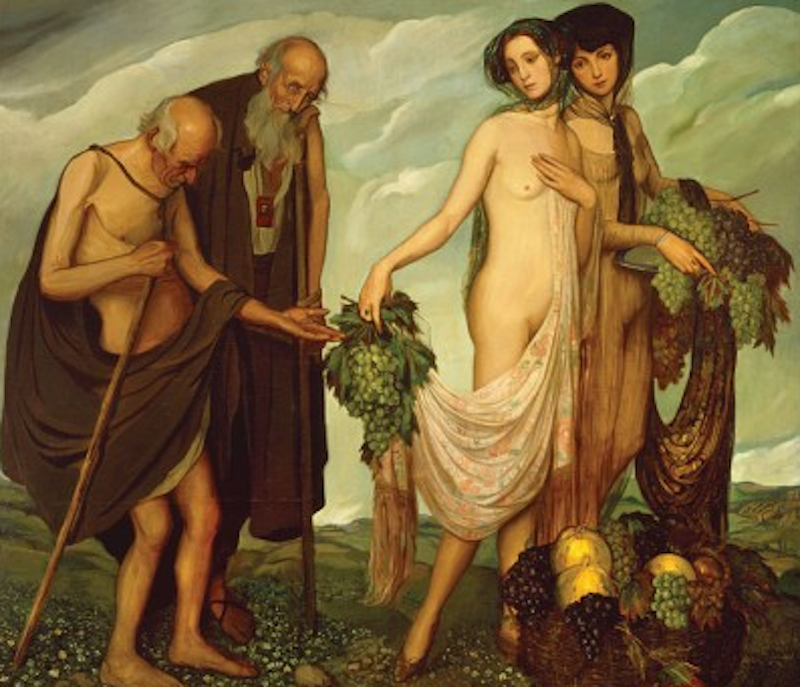



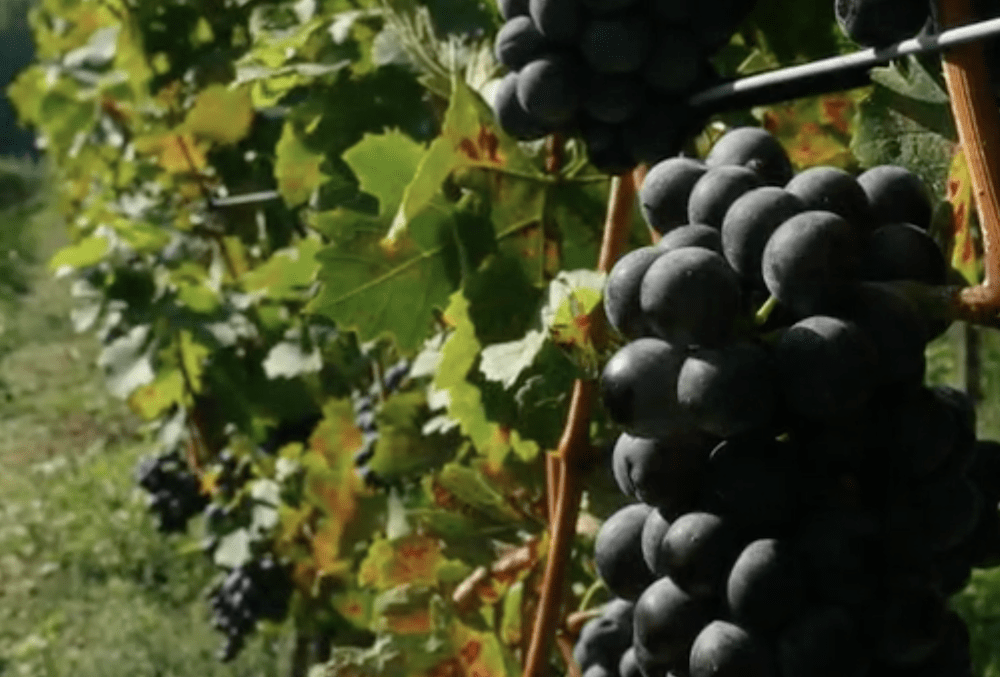

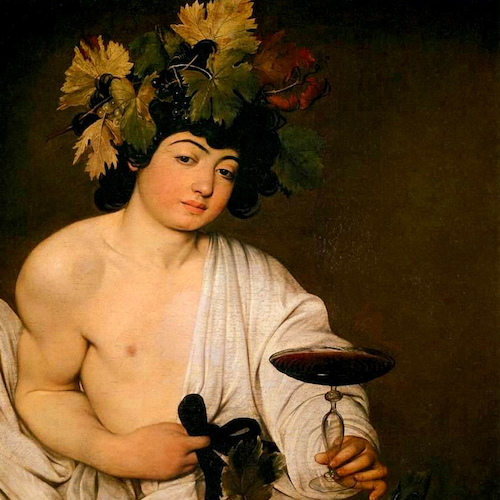

A very well researched and investigated piece that educated and entertained this Mexican national. I agree that Mexican wine is under explored and with time and attention it easily could become as fine as Jaliscan tequilas. Another fabulous article by one of my favorite writers and artists.